Welcome to the second installment of Lesbian Power Couples From History Who Did Cool Shit! In Installment One, we looked at 16 Lesbian Power Couples From History Who Got Shit Done, Together. See, lesbians are well-known for our unique ability to find a girlfriend and then turn that romantic relationship into an all-consuming life partnership — starting businesses, pursuing activism, revolutionizing social services, erecting schools, liberating marginalized groups. This is true today but has also been true since the beginning of time. Artists specifically have often existed outside of mainstream cultural norms and are also particularly prone to recording their own life histories, and thus the arts are a ripe area in which to find lesbian stories of this nature. So I did!
The following rules applied to the construction of this list:
- I defined “power couple” as a relationship in which both women were able to achieve some artistic success or inspiration because of their relationship with each other.
- The word “lesbian” is used as an adjective to describe a same-sex relationship, not the sexual orientation of the women in the relationship.
- I defined “from history” as relationships that began prior to 1950.
- Couples on List #1 couldn’t also appear on List #2, but there are plenty there who apply to both: Edith Anna Somerville & Violent Florence Martin, Ethel Mars & Maud Hunt Squire, Fannie Johnston & Mattie Edwards Hewitt, Gertrude Stein & Alice B. Toklas, Ethel Williams & Ethel Waters and Dorothy Arzner & Marion Morgan.
- Unless otherwise noted, sources for this post are Days of Love: Celebrating LGBT History One Story at a Time, Odd Girls & Twilight Lovers, The Sewing Circle or Wikipedia.
Lesbian Power Couples From History: The Arts
Katherine Bradley and Edith Cooper, Writers (1870s – 1913)

Michael Field published eleven books of poetry and thirty plays as well as “countless unfinished works,” most of which have faded into obscurity. But! There actually was no “Michael Field,” per se, there were merely two women who wrote as “Michael Field”: Katherine Bradley and Edith Cooper. The lady-loverbirds were not deterred by the 16-year age gap between them, or by the fact that Katherine was Edith’s aunt. “Both tended to be formidably formal in speech and dress,” writes historian Phillip Clark, “and their strength of mind and love of the classical world, lyric poetry, and verse drama made them a brilliant match for each other.” They left behind 28 volumes of co-written diaries as well as heaps of revelatory love poetry.
Renée Vivien and Natalie Clifford Barney, Writers (1898-1901)

Natalie Barney, a wealthy artist and poet whose legendary salon in Paris hosted all the coolest hottest queerest humans in all the art world for 60 years, has a list of formidable exes that rivals that of Mercedes de Acosta. Although Barney’s longest relationship was with painter Romaine Brooks (which, for a while, was an official thruple that also included Elisabeth de Gramont), wealthy poet Renée Vivien was Barney’s first love and much artistic work sprung out of their brief union.
Renée’s poetry, composed entirely in French, was heavily influenced by the feminist theorhetical framework provided by Barney and a lot of it was just straight-up about Barney. Together, they studied Greek and adapted the imagery of Symbolist poets and Sappho to describe love between women. “She had found new inspiration through me, almost without knowing me,” Barney wrote of Renée. But their relationship was plagued by intense jealousy issues, exacerbated by Natalie’s insistence on non-monogamy (Renée was not herself poly) and Renée’s lingering unrequited feelings for a childhood friend. The drama eventually led to their split, and it left Natalie writing mournful essays as well as torturous love poems aimed at winning Renée back, which historian Janette Ayachi notes “was what Vivien herself seemed to want, to be thrown full-throttle into the suffering of love post-mortem, for the sake of art.” After a brief reunion on the Isle of Lesbos in 1904 (seriously), they split for good.
Gerda Wegener & Lili Elbe, Painters (1904-1930)
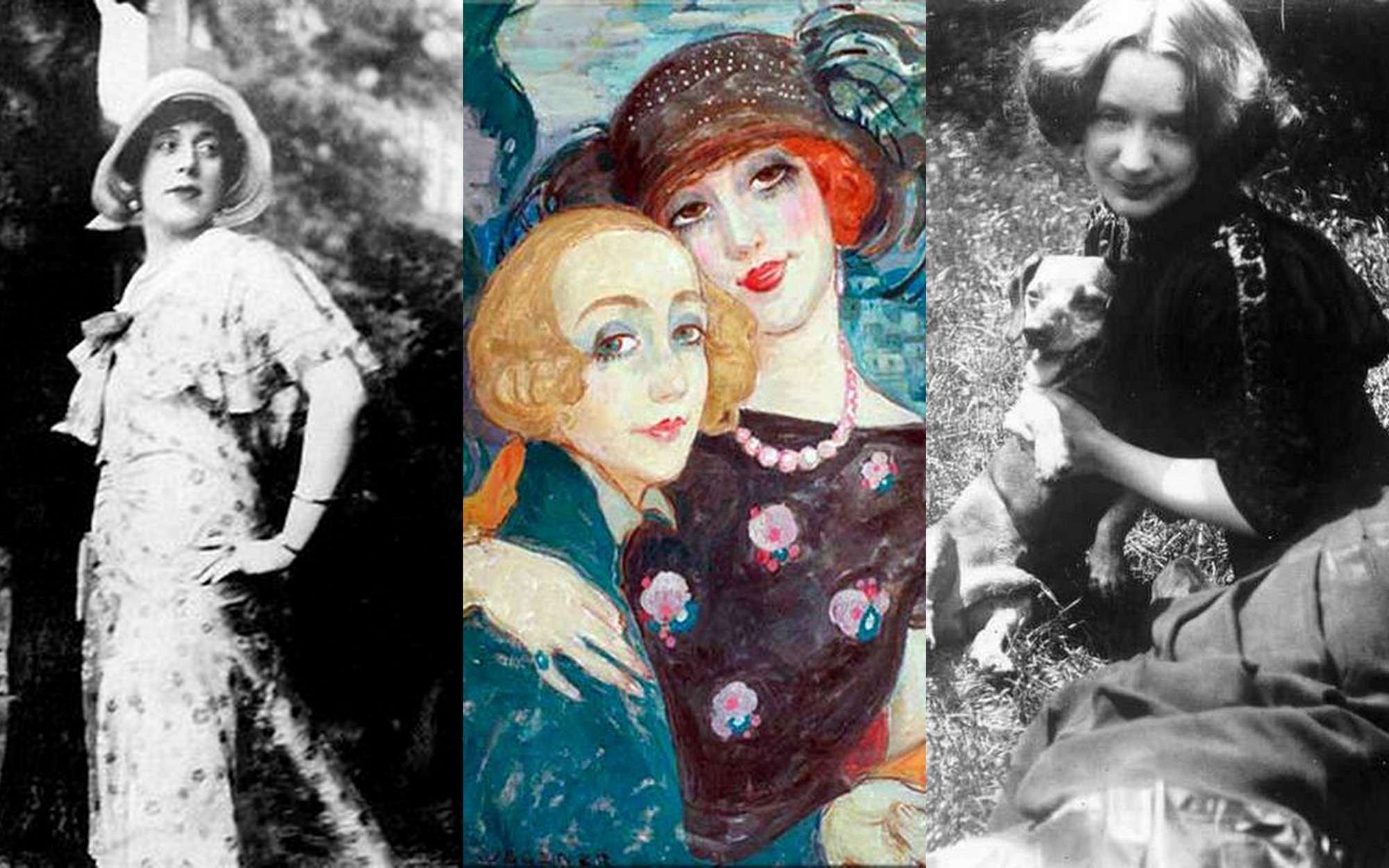
Wegner and Elbe met as students at the Royal Danish Academy of Fine Arts in Copenhagen and they married shortly thereafter, when Gerda was 19 and Lili was 22. Both worked as illustrators — Gerda was a successful Art Deco illustrator who published fashion portraits in Vogue, Lili was a landscape painter. Also, Lili was still presenting as Einar Wegener, a straight cis man. They settled in Paris in 1912, where it was okay for Gerda to be a lesbian and for Lili to live as a woman. Gerda’s portraits of Lili made them both famous. Following her first of several surgeries in 1930, Lili gave up painting. Successfully legally changing her name and gender also led to the dissolution of her marriage. In 1931, after an experimental uterus implant procedure, Lili died from a resulting infection. Gerda married an Italian diplomat and moved to Morocco, drank a lot, and eventually died of a heart attack in 1940.
Florence Wyle & Frances Loring, Sculptors (1905 – 1968)
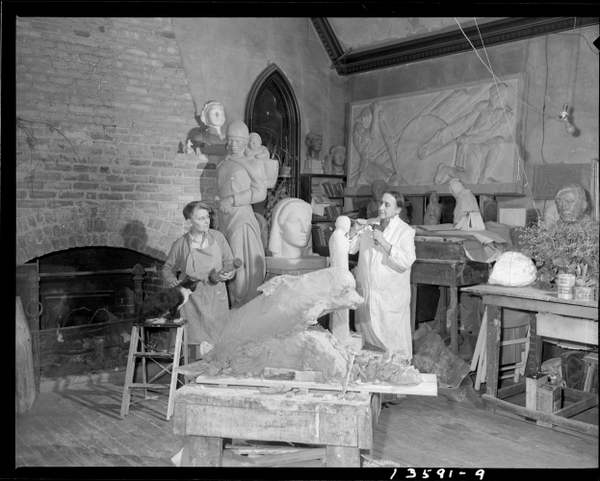
Sculptor Florence Wyle’s relationship with Frances Loring began at The Art Institute of Chicago in 1905, where Loring instructed Wyle in modelling and sculptural design. They were clearly pretty into each other from the jump ’cause they ended up spending the rest of their entire lives together. The two women moved to Greenwich Village in 1902, and relocated to Toronto in 1913 where they eventually converted an abandoned church into their studio and living space. It would become a gathering place for Toronto’s artistic community and the headquarters of the Sculptor’s Society of Canada, of which the two were co-founders. Wyle and Loring both collaborated on and competed for commissions, reaching their career peaks in the 1930s and 1940s. Referred to as “The Girls” and forever known as The First Women of Canadian sculpture, both women donated their estates to support the arts, and a a new generation of Canadian sculptors specifically.
Claude Cahun and Suzanne Malherbe, Artists (1909-1954)
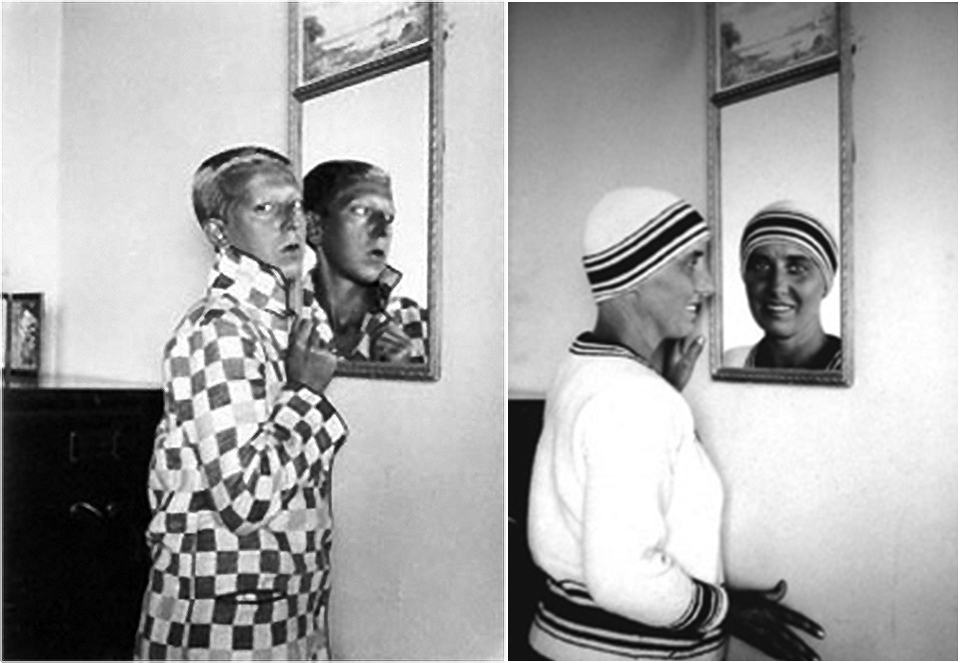
Claude Cahun was a radical and multidisciplinary artist best known for her highly staged self-portraits that challenged traditional notions of gender. She was born Lucy Renee Mathilde Schwob, the daughter of a prominent intellectual Jewish family, but later went by Claude Courlis, Daniel Douglas, and eventually Claude Cahun. Her lifelong partner, Suzanne Malherbe, aka Marcel Moore, was also her step-sister, and the two collaborated on articles, novels, magazines, sculptures, photomontages and collages. Highly associated with the male-dominated field of Surrealism, the pair hosted artists salons in their Paris home, and guests included Sylvia Beach and Henri Michaux. They used their art as activism during World War II — risky for a Jewish couple — and ended up in jail for their resistance, but were released before a death sentence came to pass. Marcel died in 1972, and is buried next to Claude on the island of Jersey.
Willa Cather, Writer and Edith Lewis, Editor (1908 – 1947)
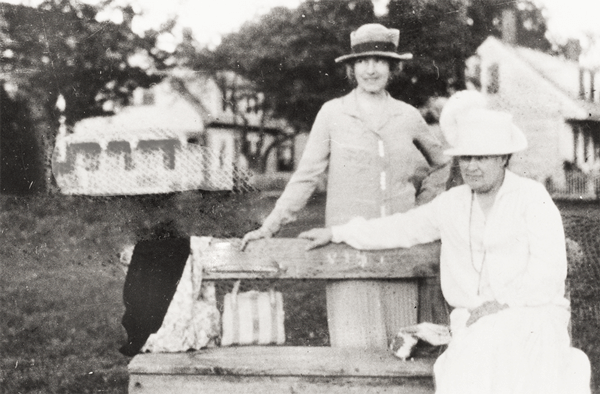
The famed author of O Pioneers! met Edith Lewis in New York, connecting with her over a mutual interest in writing. In 1908, they moved in together in Greenwich Village, where they would remain together for the last 39 years of Cather’s life. Lewis wrote and edited magazines and advertising copy, as well as going over all of Willa’s novels before publication and also writing her book jacket blurbs. The socialite Isabelle McClung, however, was likely Cather’s true love, and Cather lived with McClung’s family for some years and they traveled to Europe together. When Isabelle decided to marry a violinist, Cather dug her heels in with Lewis. Lewis and Cather summered with Isabel in New Hampshire, where Cather and thirty years later, Lewis; were buried.
Una Troubridge, Sculptor/Translator/Writer and Radclyffe Hall, Writer (1915-1943)
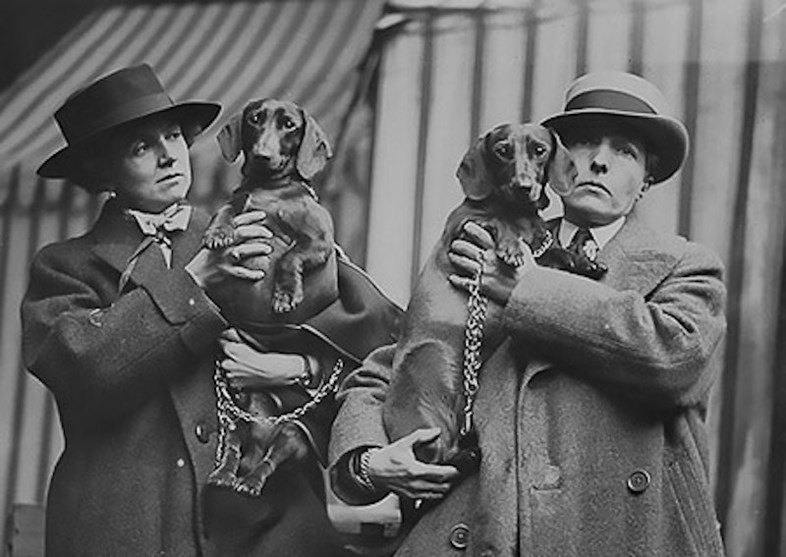
Una, a talented sculptor and translator, met legendary Well of Loneliness author Radclyffe Hall through her cousin, Mabel Batten, who was Hall’s lover at the time. Batten died in 1916, at which point Una and Radclyffe promptly U-Hauled, got into spiritualism, and began holding seances to commune with Mabel, which is some serious ex baggage. They also raised show dogs. Hall published eight novels and seven volumes of poetry, and Troubridge’s translation work is credited with bringing the works of French novelist Colette to an English audience. Troubridge also wrote a biography of Hall entitled The Life and Death of Radclyffe Hall.
Margaret Anderson and Jane Heap, Writers/Editors (1916 – 1920s)
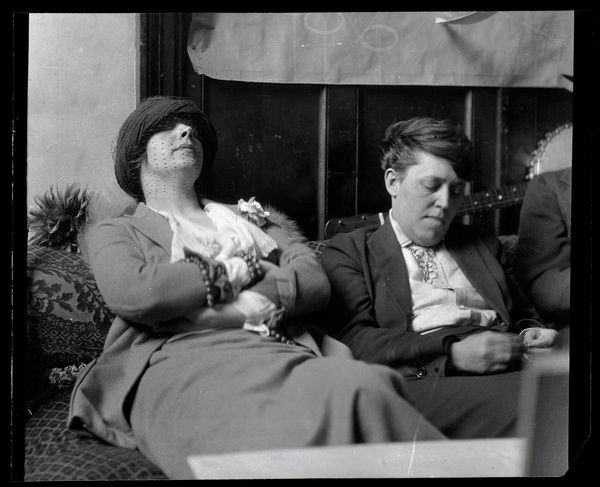
Anderson founded and edited The Little Review, an art and literary magazine, in 1914, and in 1916 she got her new girlfriend Jane Heap (an ex of novelist Djuana Barnes) to co-run it. Of Jane, who wore men’s trousers and sported an alternative lifestyle haircut, Margaret wrote, “My mind was inflamed by Jane’s ideas because of her uncanny knowledge of human composition, her unfailing clairvoyance about human motivation. This was what I had been waiting for, searching for, all my life.” The magazine published a stunning array of new and ultimately well-acclaimed writers like T.S. Eliot, Ernest Hemingway, James Joyce, Ezra Pound and William Butler Yeats. After an obscenity trial regarding their serial publication of Ulysses and armed with a new desire to study a specific philosopher overseas, both Anderson and Heap ended up moving to Paris circa 1921. They broke up around this time, with Anderson moving on to Georgette LeBlanc, who’d moved to Paris along with her. They kept doing The Little Review together ’til 1929.
[source]
Mercedes De Acosta, Playwright, and Eva Le Gallienne, Actress (1920 – 1924)

Mercedes De Acosta, the Shane of Old Hollywood, hooked up with basically everybody in The Sewing Circle, including Greta Garbo, Marlene Deitrich, Isadora Duncan, Maude Adams and Alla Nazimova. One of her earliest same-sex relationships was with actress Eva Le Gallienne, who De Acosta met three days before her wedding to a man. Eva wrote over one thousand pages of “frenzied passion” to Mercedes whenever the two were geographically separated. They partied in Harlem and Paris, lived together in New York, and traveled throughout Europe. Finally their artistic ambitions merged when De Acosta’s Jehanne d’Arc premiered in Paris, starring Eva and funded by a lesbian heiress who had a crush on her. The show was a distaster, however, as was Sandro Botticelli, another play De Acosta wrote for Eva, and following a bender in Paris where the two women dressed entirely in black and were maybe doing a lot of cocaine, they broke up, moving swiftly forward into a series of new relationships and affairs.
Frieda Belinfante, Composer/Cellist and Henriëtte Hilda Bosmans, Composer (1920 – 1927)

Cellist and composer Frieda Belinfante was born into a musical family, descended from a line of Portugese Sephardic Jews — her father was the first in his family to marry a gentile. From 1920 to 1927 she was in a non-monogamous relationship with Henriëtte Bosmans, a Dutch composer and pianist. Frieda rescued Henriëtte from her overbearing mother, and they lived together, with practice/rehearsal rooms on separate floors. They made friends with other musicians, participating in a chamber music group that rehearsed weekly and performed locally. Frieda premiered Bosmon’s Second Cello Concerto in 1923.
Because Frieda was interviewed in the early ’90s for the Holocaust Memorial Museum’s Oral History Project, we’ve got access to the full scoop on their union — apparently Henriëtte was kind of an asshole, chiding her girlfriend for needing more time to rehearse and work than she did, Henriëtte had what Frieda called an “easy talent.” Generally, though, Frieda didn’t mind the power imbalance of her relationship with her “first love,” recalling, “She needed somebody. She was a lonesome person. And she remained a lonesome person because she was not a giving person. She was a person who took more than she gave. Which was fine with me because I had an abundance of devotion to give. I didn’t feel that I needed somebody to love me as much as I felt the need to love somebody… I admired her and I was devoted to her, and I didn’t ask for devotion, I was so filled with the feeling of giving up myself.” Henriëtte eventually left Frieda for a man. During World War II, Frieda was a prominent member of the Dutch resistance to the Nazis. Henriëtte died of stomach cancer in 1952.
[Frieda’s discussion of their relationship begins in Tape 14 of the Oral History]
Yoshiya Nobuko, Writer, and Monma Chiyo, Editor (1923 – 1973)
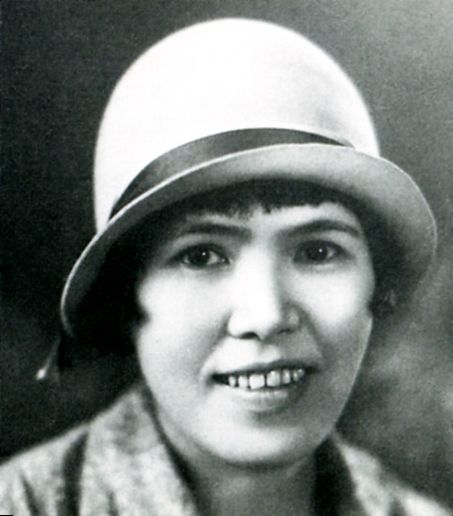
Yoshiya Nobuko, a 27-year-old writer, and Monma Chiyo, a 23-year-old math teacher, were introduced by a mutual friend in 1923. Nobuko was a pioneer of “girls fiction,” which included stories of romantic friendships between women and girls. In 1926, the two women cemented their lifelong “collaborative working relationship” as writer and secretary. Nobuko wrote popular fiction, including “sugary girls’ fiction,” non-fiction for newspapers, and eventually created a “new style of historical fiction” focused on women’s stories. Chiyo wrote drafts for Nobuko’s speaking engagements, coordinated celebratory events, entertained valuable guests, and nursed Nobuko when she fell ill. Scholars have noted that “their relationship was very productive, with Chiyo playing Alice B. Toklas to Nobuko’s Gertrude Stein.”
Djuana Barnes, Writer, and Thelma Wood, Artist (1920s-1930s)

Prolific lesbian writer and key figure of the Greenwich Village/Bohemian Paris scene Djuna Barnes met the irresistibly handsome six-foot-tall sculptor and silverpoint artist Thelma Wood in Paris, where Barnes had been sent in 1921 to interview expats and decided to remain, ’cause she loved it. Both regulars at Natalie Barney’s famous salon of lesbian superstars, Barnes and Wood met through Barnes’ ex, Bernice Abbot. They were passionate partiers whose “fights on the dance floors were legendary,” and they remained together for nearly a decade, remaining friends-with-benefits until the 1936 publication of Nightwood. Wood took issue with her portrayal in the book, said it ruined her life, and never spoke to Barnes again. Healthy!
Virginia Woolf & Vita Sackville-West, Writers (1925-1928)
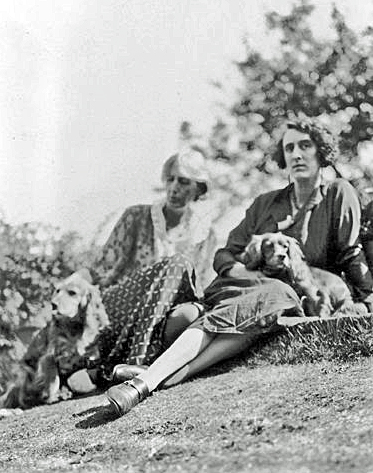
The affair between Virginia and Vita, who were both married, was not considered shocking within Virginia’s bohemian social circle — The Bloomsbury Group was accepting of bisexuality and open marriages. Vita was a huge cheerleader for Virginia, trying to build her confidence to leave her self-imposed isolation and to believe in her skills as a writer. The letters between the two writers, The Letters of Vita Sackville-West to Virginia Woolf, have become one of lesbian history’s most treasured works, and Virginia’s novel Orlando was inspired by Vita. They met in 1922 and were friends for a few years before the relationship turned sexual, as faithfully documented in Virginia’s diaries. Although the affair ended in 1927 or 1928, they remained close friends.
Mai-Mai Sze, Artist, and Irene Sharaff, Costume Designer (1930s – 1992)
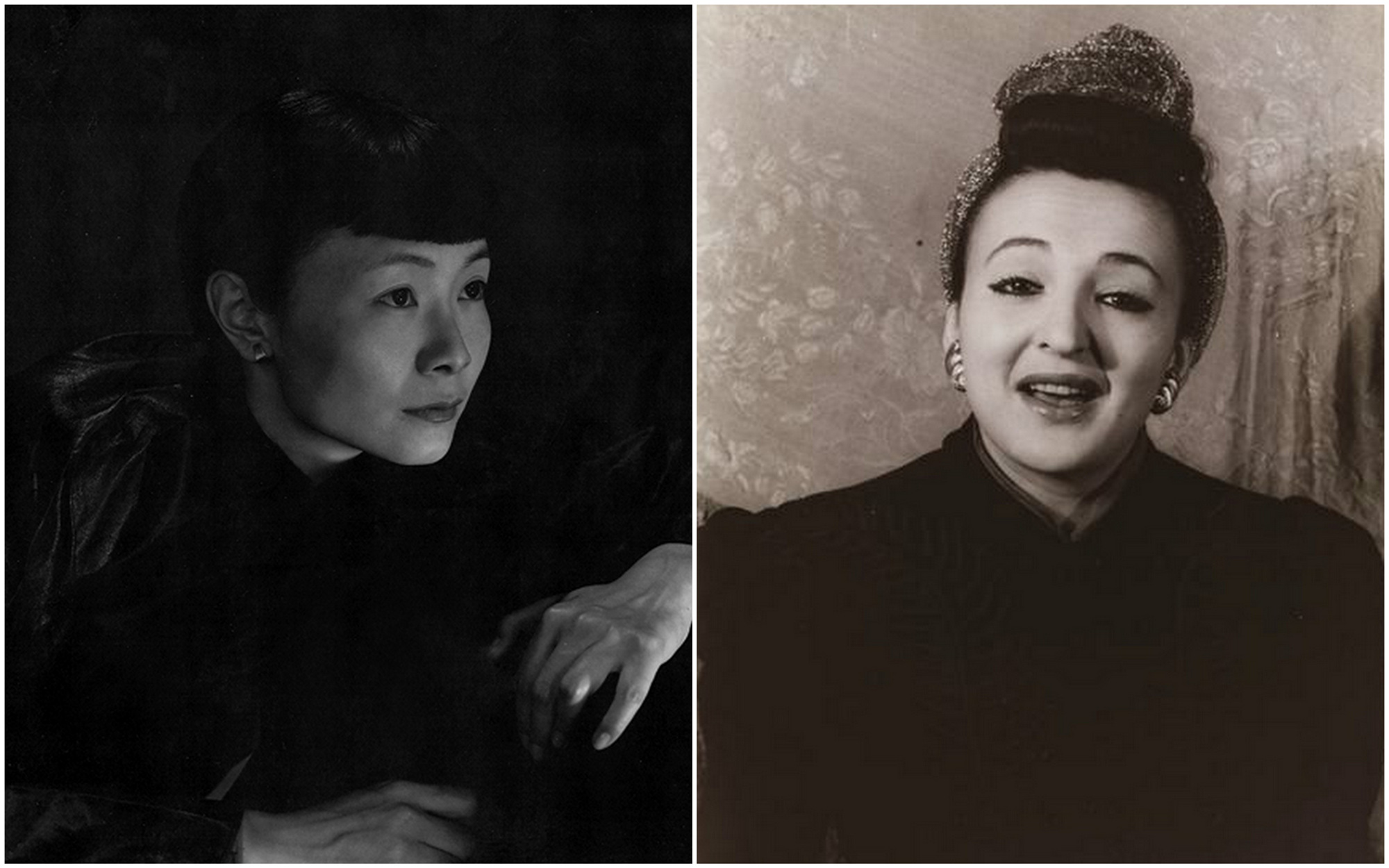
The daughter of a Chinese ambassador to England and the US, Mai-Mai Sze’s first job after graduating from Wellsley in 1931 was as a landscape painter. Best known for an oft-reproduced drawing of Eugene O’Neill and her English translation of the 15th century Chinese text The Mustard Seed Garden Manual of Painting —published as The Tao of Painting — she exhibited her art in London, Paris and New York; appeared in a Broadway show; wrote several books of fiction and non-fiction and was a well-known columnist for The New York Post. However, not even her autobiography mentions her long-term relationship with legendary costume designer Irene Sharaff, winner of five Academy Awards and a Tony Award.
Sharaff designed costumes for over 40 films, including West Side Story, Cleopatra, Funny Girl, Porgy and Bess and Mommy Dearest and 60 stage productions including The King and I and A Tree Grows in Brooklyn. The “devoted couple” lived together in New York. Sze accompanied Irene when she traveled for work; they attended literary parties together; and were, according to a friend interviewed by librarian Erin Schreiner, “inseparable and their love and admiration for one another was apparent to everyone who knew them.” Schreiner concludes, “Sharaff and Sze’s shared life and their devotion to one another gave them the freedom to pursue their self-defined creative, intellectual, and professional goals.”
Upon Irene’s death at the age of 83, she bequeathed her and Mai-Mai’s collection of books to the New York Society Library. Many are “warmly inscribed by their authors to Sharaff and Sze.” At Lucy Cavendish College, The Music and Meditation Pavilion was built following a donation from the couple, and their ashes lie underneath a rock beside it.
Berenice Abbott, Photographer, and Elizabeth McCausland, Writer (1935- 1965)
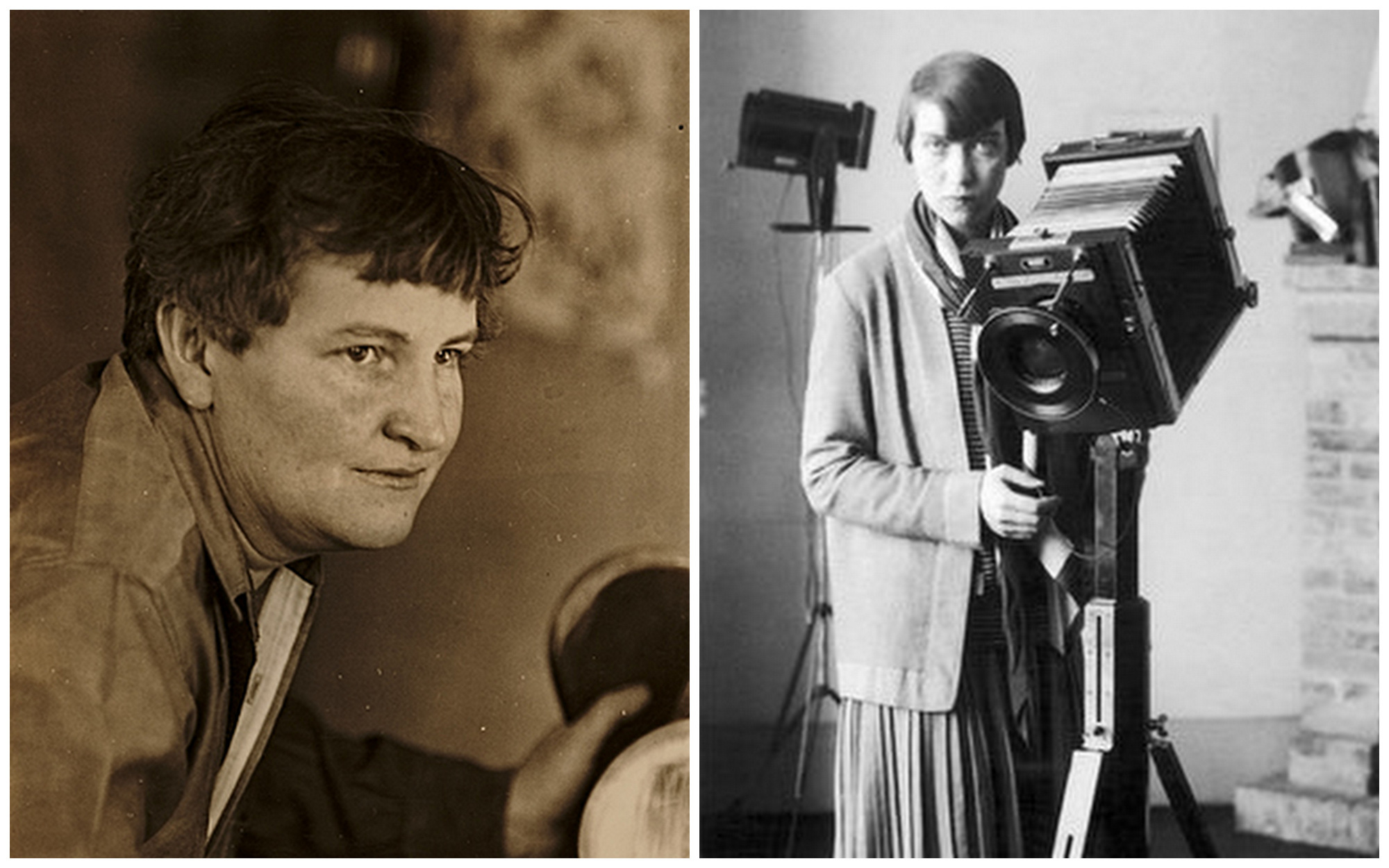
Photographer Bernice Abbott moved into a Greenwich Village loft with art critic Elizabeth McCausland in 1935 and they remained together until Elizabeth’s death 30 years later. Abbot was best known for her photography of New York City architecture, and McCausland lauded her work in the press and contributed captions for Abbott’s book Changing New York. “The Berenice Abbott papers contain the original captions proposed for the book and they are an absolute treasure to read,” writes the Museum of New York. “They reveal the literary genius of McCausland, who attempted to produce cinematic effects with her descriptions of the photographs.” The pair later took an epic road trip on US 1 from Florida to Maine, photographing small towns and automobile-related architecture.
Tuulikki Pietilä and Tove Jansson, Artists & Writers (1945 – 2001)

The Moomin books for children, created by Tove Jansson, have sold millions of copies and were translated into 44 languages. Tove met Tuulikki Pietilä, a Finnish graphic artist and professor, through art studies, and the two women collaborated on a multitude of projects including a model of the Moominhouse. They traveled the world as a pair, always documenting their adventures on film, and spent the rest of the year on the island Klovharun or in their Helsinki apartment, where each woman had her own studio. The Moomin character Too-Ticky is based on Tuulikki. They were together until Jansson’s death in 2001.
Gabriela Mistral, Poet, and Doris Dana, Writer/Translator, (1940s-1957)
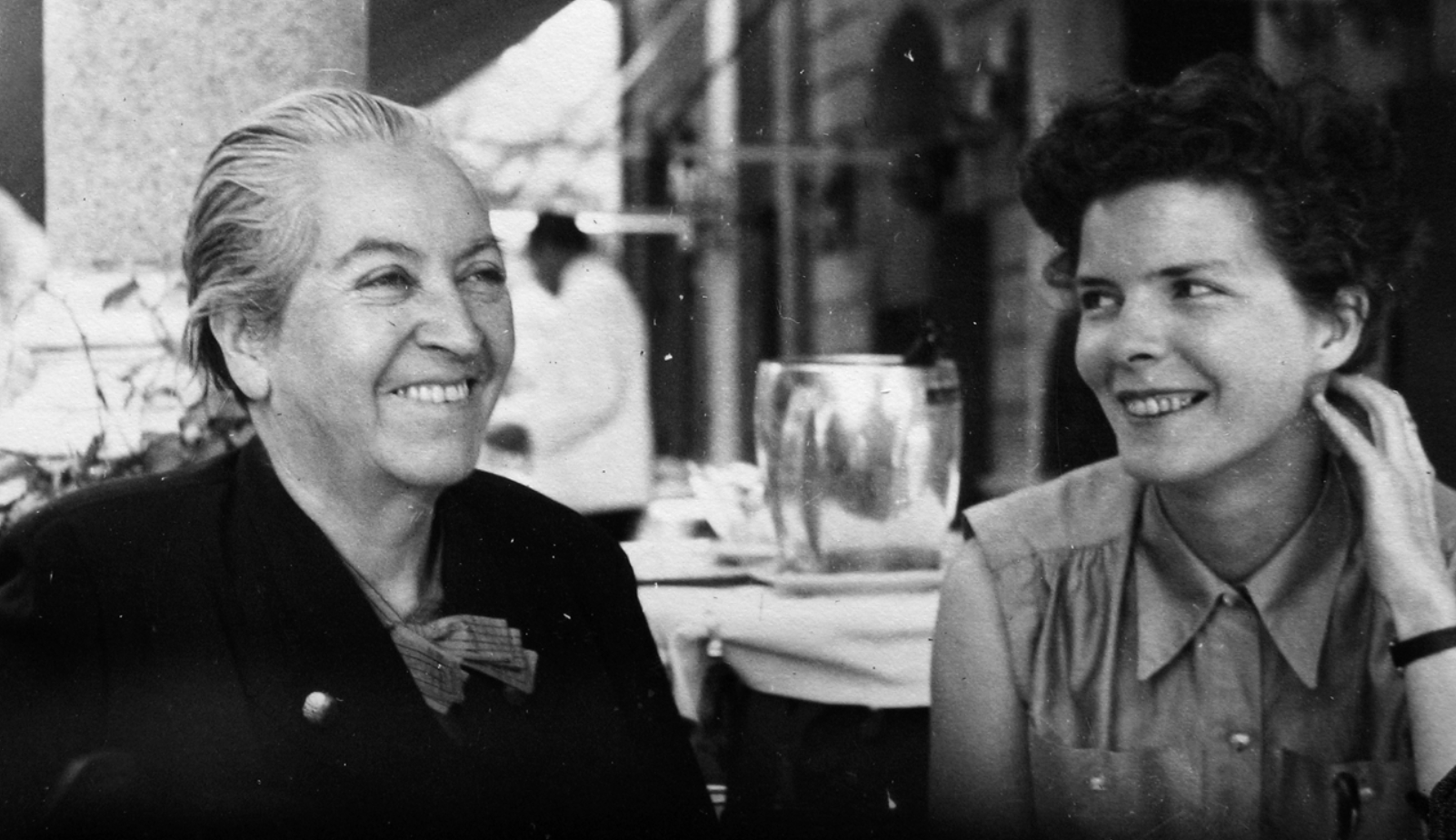
Chilean poet and Nobel Laureate Gabriela Mistral was 31 years older than North American writer Doris Dana, who she spent the last nine years of her life with. Dana translated Gabriela’s works into English, telling Gabriela in a letter that “your name and your work represent for me all that is strong and significant, beautiful, and truly eternal.”
[source]
Ruby Lucas and Tiny Davis, Musicians (1948 -1994)
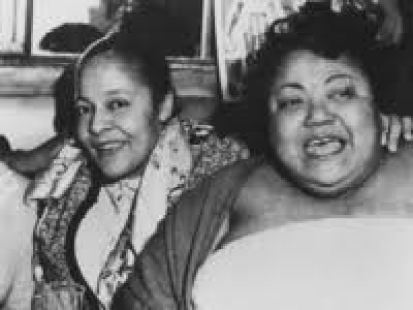
Ernestine “Tiny” Davis, eventually known as the “female Louis Armstrong,” got her big break as a member of The International Sweethearts of Rhythm, a pioneering all-girl racially integrated band that played all over the country as well as USO Tours during World War II. She met drummer-pinaist Ruby Lucas in the Hell Divers, the band Davis started after the Sweethearts. The two became lovers and gay rights icons, opening their own club in Chicago, Ruby and Tiny’s Gay Spot, in the 1950s. You can learn more about the women in the documentary Tiny & Ruby: Hell Divin’ Women.
These are only a small selection of the many lesbian artist power couples out there! If you liked this post, be sure to check out the first installment and keep your eyes peeled for the next one.

